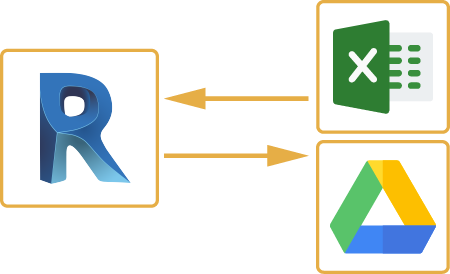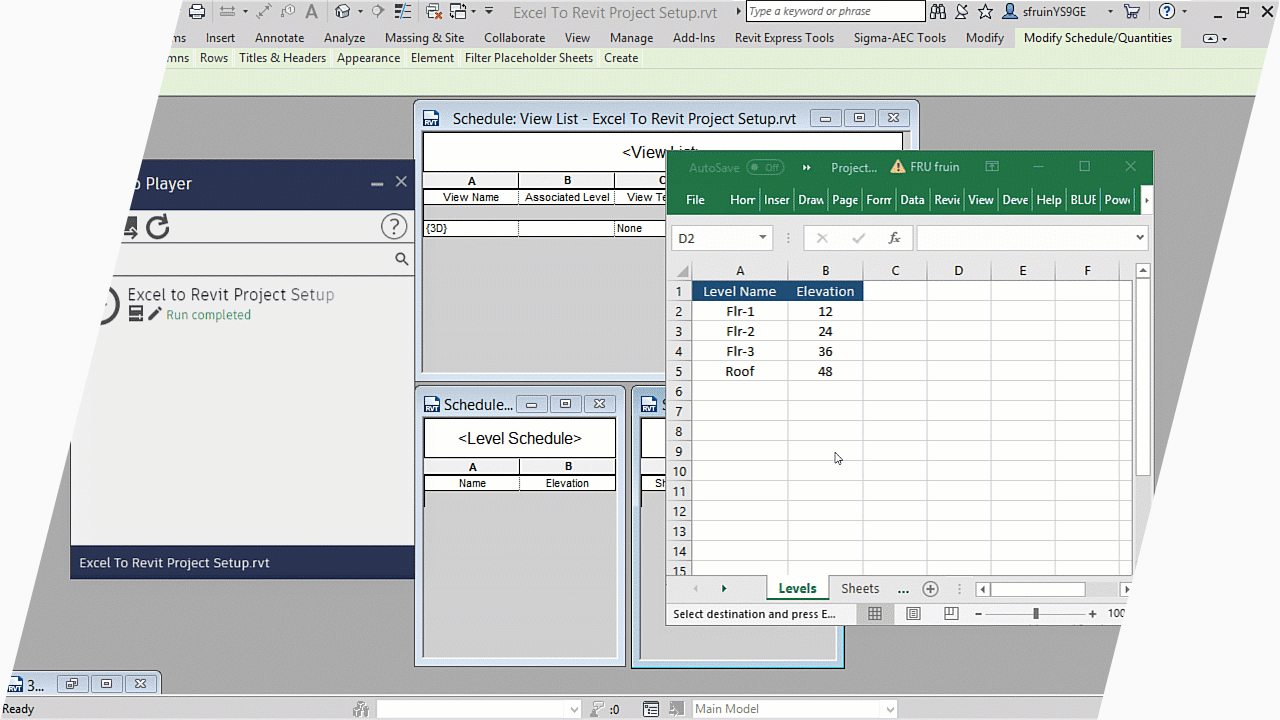Revit Tool Selection for Streamlined Modeling and Layout
Wiki Article
Revit Excel Combination Demystified: Simplifying Process for Boosted Job Sychronisation
Look no even more, due to the fact that Revit Excel Integration is right here to demystify the procedure and enhance your tasks. In this article, we will assist you via the relevance of Revit Excel Combination, show you how to simplify process, and provide best techniques for successful combination.The Importance of Revit Excel Combination
You require to understand the significance of Revit Excel combination to efficiently streamline your process and boost project coordination. The assimilation of Revit, a powerful building details modeling (BIM) software, with Excel, a commonly made use of spreadsheet program, offers various benefits for designers, engineers, and building and construction experts.

By incorporating Revit with Excel, you can remove hand-operated data entry and minimize the risk of mistakes. This not just saves time but additionally makes certain accuracy in your task documents. You can update information in Excel, and it will instantly upgrade in Revit, keeping uniformity throughout your job.
Furthermore, Revit Excel combination improves job sychronisation by enabling effective cooperation amongst group members. With data synchronized between Revit and Excel, everyone can access the most updated information and work together perfectly. This advertises smoother communication, reduces conflicts, and improves general job performance.
Exactly How to Streamline Workflows With Revit Excel Integration
Optimize your process by flawlessly linking Revit and Excel to simplify your workflow. By incorporating these 2 powerful tools, you can boost job sychronisation and improve performance in your work. With Revit Excel combination, you can conveniently move information in between the two platforms, permitting seamless interaction and collaboration.

Another benefit of Revit Excel combination is the ability to create custom-made reports and evaluate information more successfully. With Excel's durable features, you can perform innovative calculations, produce graphs and graphes, and generate comprehensive records based upon the data from your Revit designs. This enables you to make and acquire useful understandings informed choices throughout the job.
Enhancing Job Coordination With Revit Excel Assimilation
By perfectly attaching your layout software program with effective data analysis tools, you can substantially boost the sychronisation of your projects. Revit Excel integration permits you to enhance your workflows and improve job control by eliminating hands-on data entrance and reducing mistakes. With this combination, you can easily move data in between Revit and Excel, making certain that all task details is up to day and precise.Among the vital benefits of Revit Excel combination is the capability to import and export data between both software program perfectly. This indicates that you can easily import existing project data from Excel right into Revit, saving you time and initiative in returning to details. In a similar way, you can export job data from Revit to Excel, enabling you to do sophisticated analysis and computations utilizing the powerful functions of Excel.
In Addition, Revit Excel integration enables you to produce vibrant web links between both software application (revit tools). This indicates that any kind of modifications made in Revit will automatically upgrade in Excel, and the other way around. This guarantees that all task stakeholders are working with one of the most current info, boosting project coordination and decreasing the danger of mistakes
Conquering Difficulties in Revit Excel Integration
When getting rid of difficulties in the combination of Revit and Excel, it's important to guarantee seamless information transfer and lessen errors. One common difficulty is the compatibility of information formats between Revit and Excel.Another challenge is the lack of synchronization between Revit and Excel. It's crucial to establish a clear operations that guarantees both systems are updated in real-time. This can be achieved by utilizing cloud-based cooperation tools or establishing a system for normal data syncing.
Handling large datasets can additionally be problematic. Revit and Excel have different abilities when it involves managing big amounts of information. To conquer this obstacle, you can split the information into smaller sized, convenient chunks or use information filtering system strategies to concentrate on particular locations of interest.
Finally, human mistake can bring about disparities between Revit and Excel data. It is essential to educate group members on the assimilation process and establish quality control steps to capture any kind of errors. Routine audits and cross-checks can visit their website help identify and fix any kind of variances.
Ideal Practices for Effective Revit Excel Combination
To make sure effective assimilation of Revit and Excel, it is essential to comply with some best methods that will assist simplify your operations and decrease mistakes. Firstly, always start by producing a clear and orderly folder framework for your project files. This will certainly make it easier to situate and update the essential data when required. Additionally, when connecting Excel Continue data right into Revit, make sure that the data is tidy and free from any kind of format issues that might trigger mistakes. Usage consistent calling conventions for your Excel worksheets and columns to avoid complication.An additional vital practice is to frequently upgrade your Excel information in Revit. Make it a habit to assess and update the data at regular intervals, particularly when changes are made to the task.

Final Thought
So, there you have it - revit Excel integration doesn't have to be a difficult task. With revit Excel assimilation debunked, you'll be well on your means to optimizing the possibility of these tools and taking your tasks to new heights.You can export your Revit timetables to Excel, make modifications or updates in Excel, and after that import the upgraded information back right into Revit with just a few clicks. Revit Excel combination permits you to improve your workflows and improve job sychronisation by eliminating hand-operated data entry and lowering mistakes. With this integration, you can his response quickly transfer information in between Revit and Excel, making sure that all project information is up to date and precise.
You can export job information from Revit to Excel, enabling you to carry out advanced analysis and computations using the powerful functions of Excel.
In addition, when linking Excel information right into Revit, ensure that the data is clean and cost-free from any kind of formatting problems that can trigger mistakes.
Report this wiki page